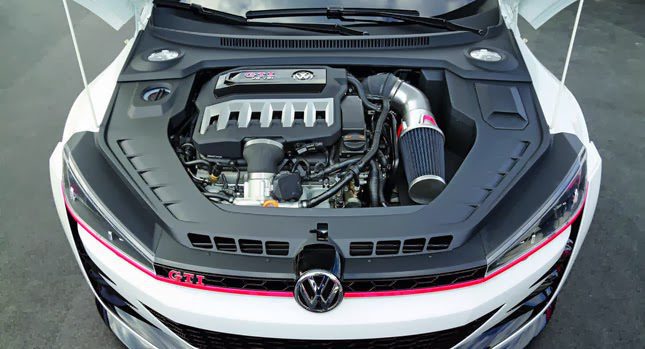Opel Corsa Engine: Everything You Need to Know Before Buying
Opel Corsa Engine: Everything You Need to Know Before Buying
Blog Article
Checking Out the Inner Workings of a Compact Car's Engine System
As drivers, we commonly take for approved the elaborate procedures that take place within the boundaries of our lorry's engine system. In this expedition of a compact automobile's engine system, we will certainly decipher the internal operations of this mechanical symphony, dropping light on the mysteries that drive us ahead on our day-to-day journeys.
Combustion Process Introduction
The burning process in a portable lorry's engine system is a vital device that efficiently converts gas into energy to power the vehicle. This process happens within the burning chamber of the engine, where fuel and air mix, spark, and generate controlled explosions. The combustion process includes four primary phases: consumption, exhaust, power, and compression.
Throughout the intake stage, the piston relocates downward, attracting in a mix of air and gas right into the combustion chamber. This descending movement generates the power needed to drive the vehicle. This cyclic combustion procedure is basic to the operation of a compact automobile's engine system, ensuring efficient energy conversion for propulsion.
Piston and Cyndrical Tube Communication

The piston's precise fit within the cylinder is important for maintaining ideal compression and stopping energy loss during combustion. Tight clearances between the piston and cyndrical tube wall surfaces make certain reliable securing, enabling the piston to relocate efficiently without enabling gases to leak past. Proper lubrication is additionally essential to lower rubbing and use between these elements, enhancing longevity and efficiency.
In addition, the layout and materials utilized in manufacturing the piston and cylinder impact engine performance and longevity. Modern engines usually utilize light-weight yet long lasting products like light weight aluminum alloys for pistons and cylinder liners to lower inertia and improve thermal efficiency. Overall, the unified interaction in between the piston and cylinder is essential to the engine's performance and total performance.
Gas Injection System Functionality
Fuel shot systems in small lorry engines play a vital function in specifically providing fuel to the burning chamber for regulated and efficient ignition. The gas injection system functions by infusing gas right into the combustion chamber at the optimal minute throughout the engine's operation (opel corsa engine). This specific timing ensures that the fuel blends evenly with the air for correct burning, resulting in improved gas effectiveness and minimized emissions
There are mainly 2 sorts of fuel shot systems used in portable car engines: port gas injection (PFI) and straight gas injection (DFI) PFI systems inject gas right into the consumption port before the intake shutoff, while DFI systems inject fuel straight right into the combustion chamber. Both systems have their benefits, with DFI supplying much better gas atomization and PFI supplying a much more cost-efficient service.
Comprehending Engine Air Conditioning Mechanisms
Reliable procedure of a small car's engine relies heavily on the performance of its cooling devices. The air conditioning system in a compact car commonly is composed of a number of elements working together to manage the engine temperature level. Comprehending straight from the source these engine air conditioning mechanisms is essential for preserving the performance and longevity of a small vehicle's engine system.

Exhaust System Components Explained
The optimal performance of a compact automobile's engine air conditioning devices depends on a corresponding system recognized as the exhaust system, which makes up various crucial parts for guaranteeing effective discharges and engine performance. The exhaust system consists of components such as the exhaust manifold, catalytic converter, muffler, and tailpipe. The exhaust manifold accumulates exhaust gases from the engine's cyndrical tubes and routes them to the catalytic converter. The catalytic converter then transforms unsafe pollutants in the exhaust right into less unsafe emissions before here are the findings launching them through the muffler and tailpipe.
One crucial element of the exhaust system is the oxygen sensor, which keeps track of the oxygen degrees in the exhaust gases to aid manage fuel consumption and make certain ideal engine performance. opel corsa engine. Furthermore, the resonator might exist in some exhaust systems to minimize sound levels. On the whole, the exhaust system plays a vital function in keeping engine efficiency, minimizing harmful discharges, and making certain a quieter driving experience for compact automobile proprietors

Conclusion
In verdict, the compact car's engine system is a complicated mix of parts that interact to facilitate the combustion procedure, transform fuel right into power, and expel waste gases. Understanding the inner functions of the engine system, consisting of the piston and cyndrical tube interaction, fuel shot system, engine cooling mechanisms, Continue and exhaust system elements, is vital for preserving optimum efficiency and performance of the vehicle.
The combustion process in a small vehicle's engine system is a vital mechanism that efficiently converts gas right into energy to power the lorry.Fuel injection systems in portable vehicle engines play an essential role in precisely delivering fuel to the combustion chamber for reliable and regulated ignition.There are largely 2 types of gas injection systems used in small car engines: port fuel injection (PFI) and direct gas shot (DFI) Understanding these engine cooling systems is vital for preserving the efficiency and long life of a small vehicle's engine system.
The ideal performance of a small car's engine cooling mechanisms depends on a complementary system recognized as the exhaust system, which makes up different vital components for making certain effective discharges and engine performance.
Report this page